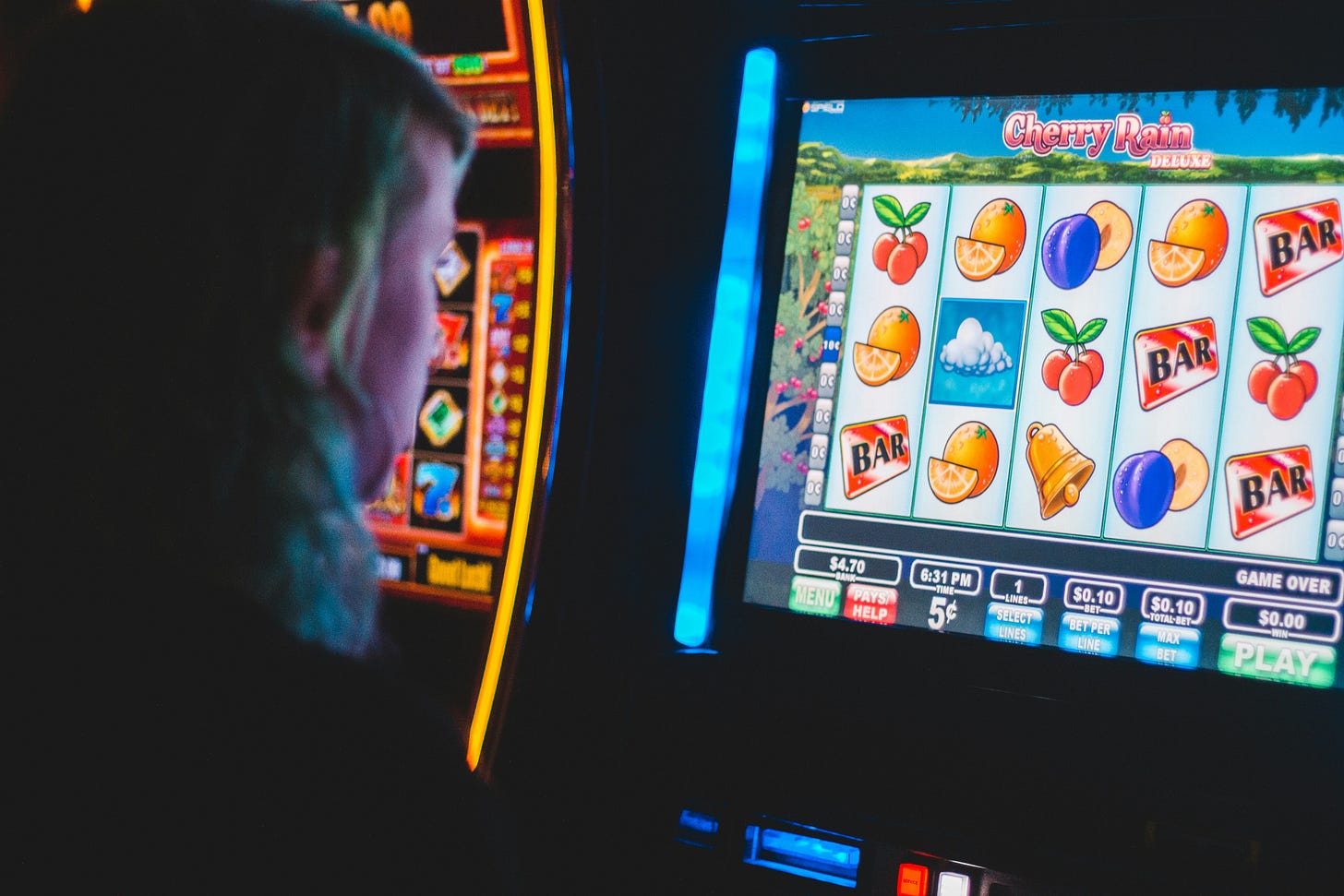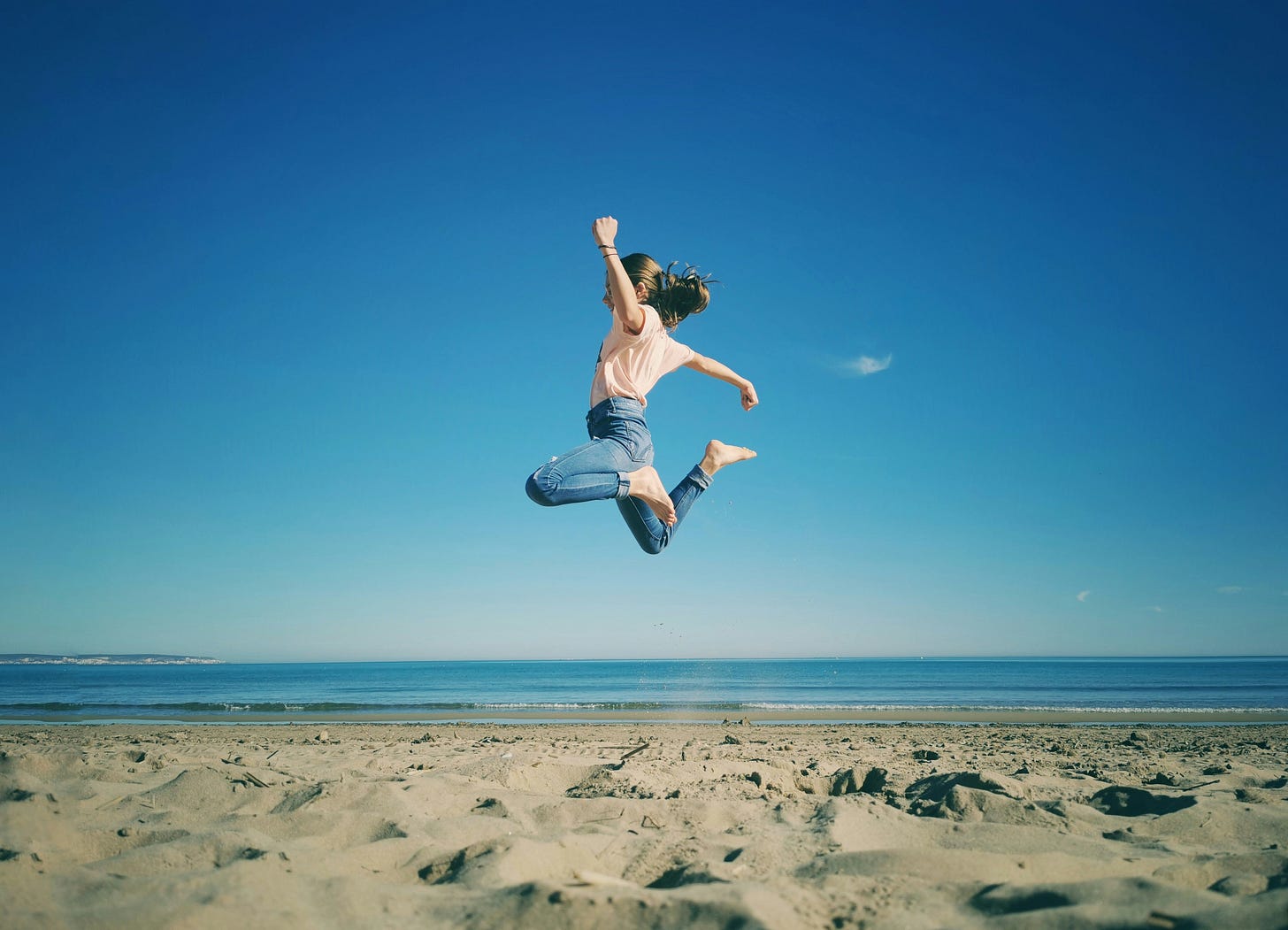Digital Quicksand: Why That "Quick Check" Turns Into 30 Minutes Every Time
I've designed apps for 15 years, here's why even I can't put my phone down
It's 11 PM on a Tuesday. I grab my phone "just to scroll Instagram or TikTok for 15 minutes to unwind" before bed. Suddenly, it's midnight, and I'm watching a stranger reorganize their pantry while simultaneously feeling that distinct brain-rot setting in. Familiar? Thought so.
Don't beat yourself up. Even as someone who designs this stuff for a living, I fall into these traps constantly. Your brain never stood a chance.
I've spent 15 years in product design, and here's the uncomfortable truth: social media and other ad-supported apps aren't designed to solve your problems, they're engineered to maximize "engagement" (industry code for keeping you glued to your screen). Why? Because their revenue depends directly on your attention. More scrolling time equals more ad impressions equals more money.
Most apps follow a formula called the Hook Model (Nir Eyal developed this model). With TikTok, it works like this:
Trigger: Your phone buzzes. "Your video is trending in your area!" Or maybe you're just bored waiting for coffee.
Action: You open the app and start scrolling through short videos.
Variable reward: Maybe you'll see something hilarious. Maybe you'll discover a life hack that blows your mind. Maybe you'll see an oddly satisfying cake decorating video that feels like visual ASMR. You never know what's coming next—that's the point.
Investment: You like a video, follow a creator, or (jackpot!) make a comment that gets hundreds of likes. Now you're checking back to see the responses, which creates the next trigger.
The science behind this is your brain's dopamine reward system. That unpredictability in the "variable reward" step is absolutely crucial, it's the same mechanism that makes gambling so addictive. If TikTok showed you exactly the same level of entertaining content every time, you'd get bored. But the possibility that the next scroll might show you something mind-blowing? That keeps your finger moving.
The worst part? Even knowing all this, I still find myself in the digital quicksand. Last night I opened TikTok to "unwind for 15 minutes" and emerged 40 minutes later having learned how to make cloud bread that I will absolutely never attempt to make. The hooks are just that good.
But understanding these mechanisms is the first step toward breaking free. Let's look at exactly how they've engineered your apps to be so impossible to put down.
The Invisible Hooks: By Design, Not By Accident
Now that you understand the basic Hook Model powering these apps, let's examine the specific design techniques that transform your "quick check" into a midnight brain-rot session. These aren't accidents, they're deliberate design choices refined through thousands of A/B tests.
1. The Endless Stream: Infinite Scroll's Sinister Magic
Remember websites with "Next Page" buttons? TikTok, Instagram, and Twitter (sorry, "X") killed those because they discovered something powerful: making a conscious choice to continue takes effort, but passive scrolling doesn't.
Infinite scroll eliminates decision points. Without natural breaks to make you question "Should I keep going?", your brain never gets that moment of pause. It's like a bag of chips with no bottom, you just keep reaching in until suddenly, oh no, where did the time go?
2. The Perfect Timing: Algorithmic Manipulation
Have you noticed how TikTok seems to know exactly when to show you something amazing, right when you're about to close the app? That's not a coincidence.
These platforms track when you typically drop off and deliberately serve more engaging content at those moments. They've analyzed your behavior patterns so thoroughly that they can predict when you're losing interest and hit you with dopamine right when you need it most. It's like a slot machine that knows you're about to leave the casino and suddenly gives you a small win.
3. The Rabbit Hole: Recommendation Engines Designed for Addiction
YouTube doesn't actually want you to find the perfect video, it wants you to watch seven videos. Netflix doesn't want you to find the perfect show, it wants you watching all weekend.
Recommendation engines don't optimize for satisfaction but for continued watching. That's why you start with a harmless cooking video and somehow end up, 45 minutes later, learning about conspiracy theories involving sourdough starters. The algorithm isn't broken when this happens, it's working perfectly.
4. The Time-Limited Tease: Manufactured Urgency
"Stories disappear after 24 hours!" "This deal ends soon!" "Limited time offer!"
Creating artificial scarcity is one of the oldest marketing tricks, but social platforms have perfected it. By making content ephemeral, they tap into your FOMO (fear of missing out) and create urgency where none exists. You have to check now or you'll miss out forever!
What makes this especially manipulative is that nothing digital is actually scarce. Unlike a limited-edition sneaker or concert ticket, digital content can be duplicated infinitely at virtually no cost. The scarcity is completely manufactured to drive engagement.
These hooks aren't just clever design, they're weaponized psychology. And when you understand how they work, you're already on your way to breaking free from digital quicksand.
Now let's talk about why these apps are so determined to hook you in the first place.
Breaking Free: A Product Expert's Guide
1. Friction By Design
The most powerful change is adding deliberate friction, and I've had to do this myself. When I notice my screen time creeping up, I take progressive steps:
First, I turned off all notifications. Not just the unimportant ones, all of them. No more red dots screaming for attention. No more "Someone just posted for the first time in a while!" My phone is now blissfully quiet, though I'm admittedly a bit harder to get hold of these days. (Sorry not sorry, work Slack. You'll survive waiting 20 minutes for a response.)
Next, I buried my most addictive apps in a folder labeled "Think Twice" on my second home screen. That tiny moment of having to hunt for TikTok is often enough to make me question whether I actually want to open it.
When things get really bad (like that week I spent three hours daily watching pottery videos), I delete the app entirely. Yes, it's inconvenient to reinstall it later, but that's exactly the point. I'm essentially creating a cooling-off period for my brain.
2. Strategic Substitution
I've discovered something fascinating about content formats: long-form is actually easier on my brain than short-form. Counter-intuitive, right?
While TikTok and Reels send my brain into a frenzied state of constant novelty-seeking, a 30-minute YouTube video or TV show actually gives my mind time to settle. The algorithm isn't frantically serving me new dopamine hits every 15 seconds. There's a narrative arc. A beginning, a middle, and an end.
That's why I now watch YouTube exclusively on my TV. Not only is it physically easier to turn off, but I can feel the difference in my brain. After an hour of rapid-fire TikToks, I feel scattered and janky, like I've consumed digital sugar. After watching a thoughtful 45-minute video essay, I feel... normal? Sometimes even refreshed?
But the change that's made the biggest difference? Phone-free mornings until work starts. Those first waking hours used to be prime dopamine-hunting time. Now they're for coffee, "reading actual books" (which is really just aspirational code for "staring at my bookshelf and feeling good about my intentions"), or just looking out the window like it's 1995. I'm not gonna lie, the first week was twitchy. Now it's the most peaceful part of my day.
3. Visual Decluttering
Your phone's visual environment matters more than you think. Those red dots and colorful icons aren't innocent design choices, they're precision-engineered attention traps.
Try these interventions:
Turn on grayscale mode after 9 PM (Settings → Accessibility → Display & Text Size → Color Filters). Removing color dramatically reduces the dopamine hit from visual rewards.
Delete apps you haven't used in 30 days. Be ruthless.
Remove all badges and notifications except from actual humans trying to reach you.
Perhaps the most life-changing setup is slapping on "Do Not Disturb" mode at night. Yes, this means if you text me after 10 PM, I won't see it until morning. My family has been informed that unless someone is literally on fire, it can wait until dawn. (The number of actual night emergencies in my life: zero. The number of "urgent" 11 PM texts about what I think about someone's potential haircut: countless.)
The goal isn't digital monasticism, I’m sharing my product design knowledge to teach you to become the UX designer of your own attention, creating systems where technology serves you rather than exploits you. Consider it your personal rebellion against companies that see your brain as nothing more than a resource to be mined for profit.
Your Brain Deserves Better
I've designed apps for 15 years and still fall victim to digital quicksand regularly. That alone should tell you how potent these hooks are.
The goal isn't perfection. You'll still find yourself watching stranger's pantry reorganizations at midnight sometimes. The difference is awareness, understanding the mechanisms designed to trap your attention lets you start building defenses.
Start small. Pick one intervention: delete one addictive app, set one time boundary, add one piece of friction.
Your brain deserves better than being treated like a slot machine. Design your digital environment like your attention is what it actually is, your most valuable, finite resource.
I’m Naema, a tech professional who is helping you reclaim time and focus through practical tech systems for your personal life. Subscribe to learn the best apps, tools, and automation tricks to simplify your daily routine.





Great advice Naema, and really interesting psychology. Following your advice, I’ve just set up a couple of automations on my phone to switch on the colour filter at 9pm and off again at 7am - I’ll let you know how it goes!
Great information. Thanks for sharing. I find myself stuck in that 15 minutes to unwind, and an hour later, I need to go to bed NOW, state. By then, I'm more wound up than I was when I started. I'm going to try the black and white!